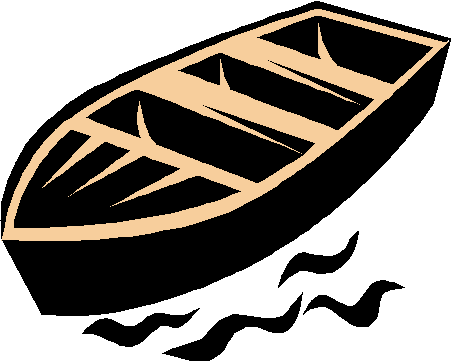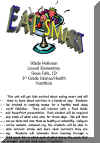Grade
level
2-3
Time
frame
2-3 weeks
Key
words
nutrition, food guide pyramid, nutrients, health
Topic
areas
Science/Health
SD
content standard goals
Health Education
Students will understand the benefits of practicing health-enhancing
behaviors which reduce health risks.
SD
content standard indicators
Students will evaluate
strategies for achieving and maintaining personal health goals.
SD
content standard benchmarks
describe ways to avoid or reduce
common childhood health problems
describe ways technology
influences personal health decisions and practices
describe the characteristics of
good personal health
explain ways to achieve and
maintain good health
determine personal health
progress and make adjustments for improvement
Brief
summary of unit
This
unit will get kids excited about eating smart and will help them to learn
about nutrition in a hands-on way.
Students will be involved in creating menus for a healthy meal
using Microsoft Publisher. They
will interact with a Food Guide Pyramid PowerPoint presentation. Each student will be required to keep track of what s/he eats
for three days. We will then
analyze our diets and rate them as healthy or unhealthy.
Using an interactive website, the students will be able to
calculate nutrient intake and learn what nutrients they are missing.
Students will culminate their learning through a healthful snack
fair in which each student shares the snack that s/he brought, and tells
what makes it healthful.
Students
will understand?
1.
That they get energy from the things they eat.
2. The components of the food guide pyramid.
3. That different nutrients are used for different needs in our
bodies.
4.
The importance of paying close attention to what they eat.
What
essential questions will guide this unit and focus teaching and learning?
1.
What is in the foods we eat that is needed for us to survive?
2.
Do we have to eat certain amounts of foods to stay healthy?
3.
Are you eating a healthy diet?
4.
Why is candy, cake, and pop considered “junk food?”
What
key knowledge and skills will students acquire as a result of this unit?
Students
will be able to identify all of the food groups in the food guide pyramid
and tell how many servings from each group they need per day.
Students
will know what nutrients are and what each nutrient is used for in our
bodies.
Students
will be able to determine if their diet is healthful or unhealthful.
Students
will be able to choose foods that are healthful and communicate the need
to eat healthy foods to their family.
Assessment
Plan
Students
will be evaluated based on a healthy menu that they create using Microsoft
Publisher.
Students
will turn in a record of what they have eaten for three days and they will
determine if they are getting the correct amount of servings from each
food group.
Students
will present a healthful snack and tell why it is healthful and what it
does for their bodies.
Learning
Activities
The
students will begin this unit by taking a look at what they eat from day
to day. They will record
everything they eat for three days. During
this time students will learn about the food pyramid and nutrients.
Students will then analyze the foods they have eaten and use an
internet site to help them determine what nutrients are missing from their
diet. The students will
culminate the unit by enjoying a healthy snack fair.
They will each bring a healthy snack to tell the class about.
They will report to the class about why the snack is healthy and
what nutrients it provides for our bodies.
Notes
The
website eatsmart.org
contains specific foods to calculate nutrient intake.
This will require the teacher to really preview and work through
any foreseen obstacles to this lesson.
It is, however, a very valuable and informative resource.

Home

